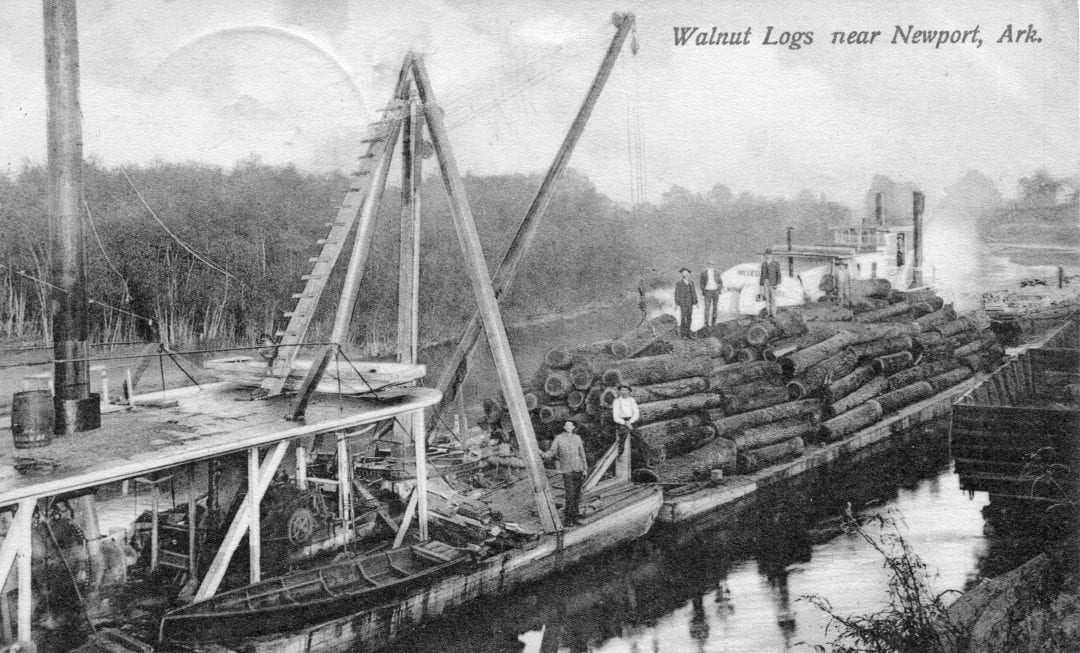
1880s, Photo Search
This postcard shows walnut logs being loaded onto a barge somewhere near Newport. They were on their way to a sawmill downriver – perhaps the Empie Lumber Mill in Newport, where they would be cut and planed into boards, studs or shingles – but they...
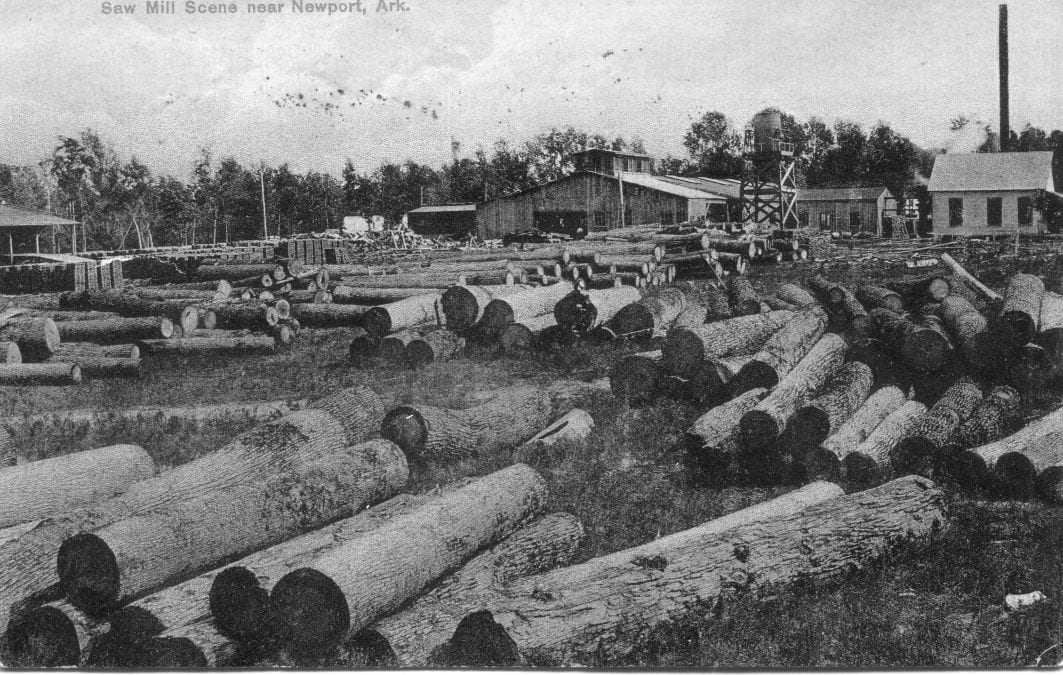
1880s, Photo Search
The first order of business in creating an agricultural economy was clearing the land. Thousands of acres of virgin timber spread throughout Jackson County, and the lumber business became s source of great wealth for the men who had the means to capitalize on this...
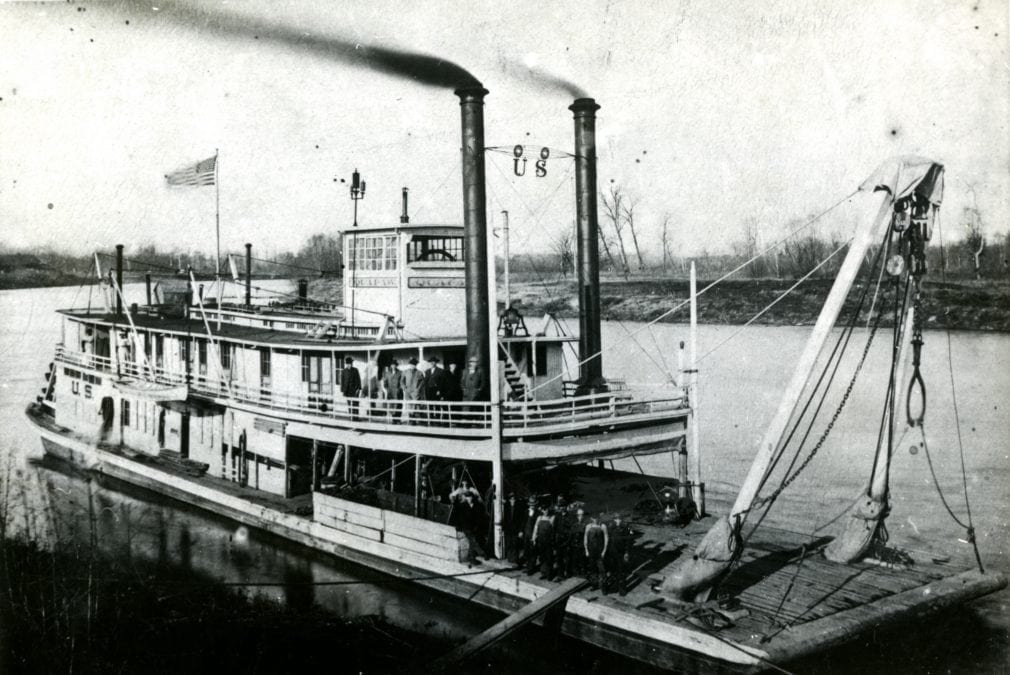
1880s, Photo Search
The Quapaw was typical of the government snag boats that kept the river free of fallen trees and other debris that could snag or sink a steamboat or barge. Because the White River ran through heavy forests, snag-boating was very important to the early years of...
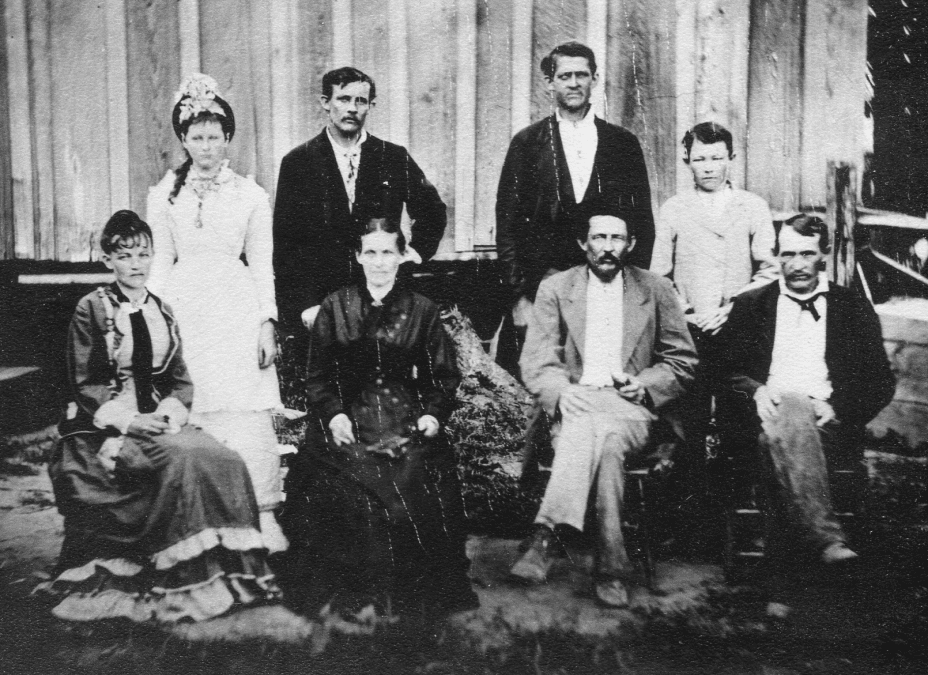
1880s, Photo Search
These ancestors of the McDonald families reflect great wealth in their clothes, jewelry, and presentation. Pictured are, from left to right, (first row) Margaret McDonald Johnson, Florence Polk McDonald Scales Gilliam, Lavator McDonald, and John McDonald; (second...
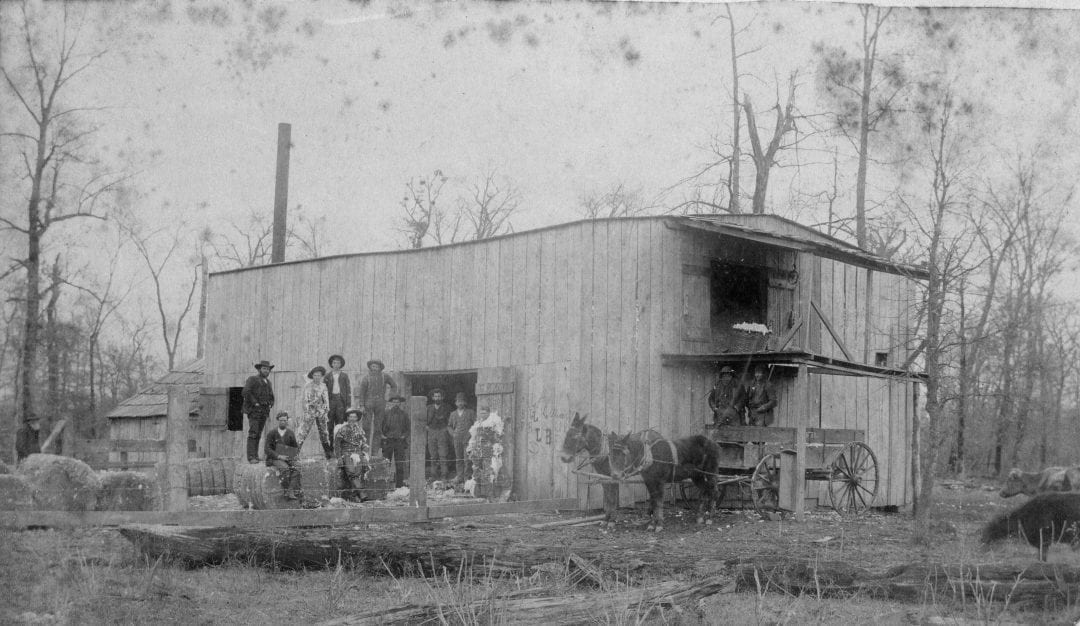
1880s, Photo Search
Joseph C. Sharp’s cotton gin was another important element in Swifton’s economy. This photograph from 1880 shows cotton arriving at the gin on a mule-drawn wagon, where it would be cleaned of trash, the seeds removed, and then compressed into bales. ...
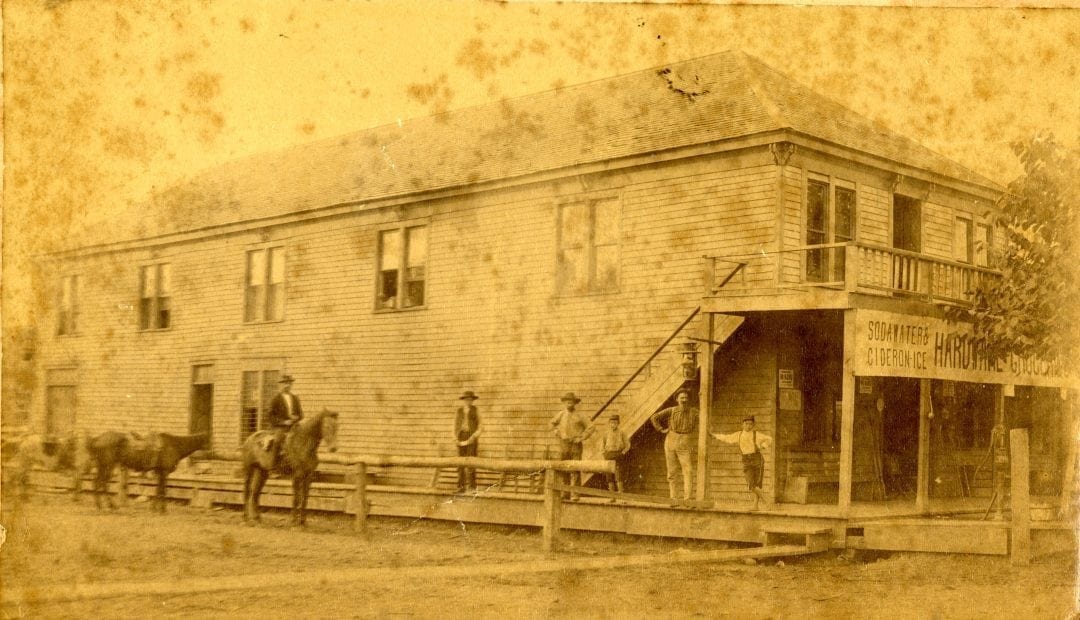
1880s, Photo Search
Situated north of Newport on the Iron Mountain Railway line, the little town of Swifton was blessed with fertile land and a thriving economy. Joseph Coffin’s store was a leading mercantile establishment in the 1880’s. From Watson, Tim, and Elizabeth...







